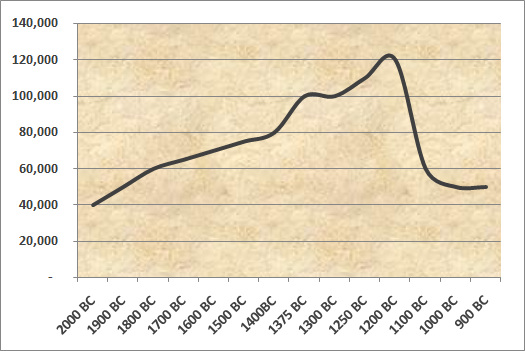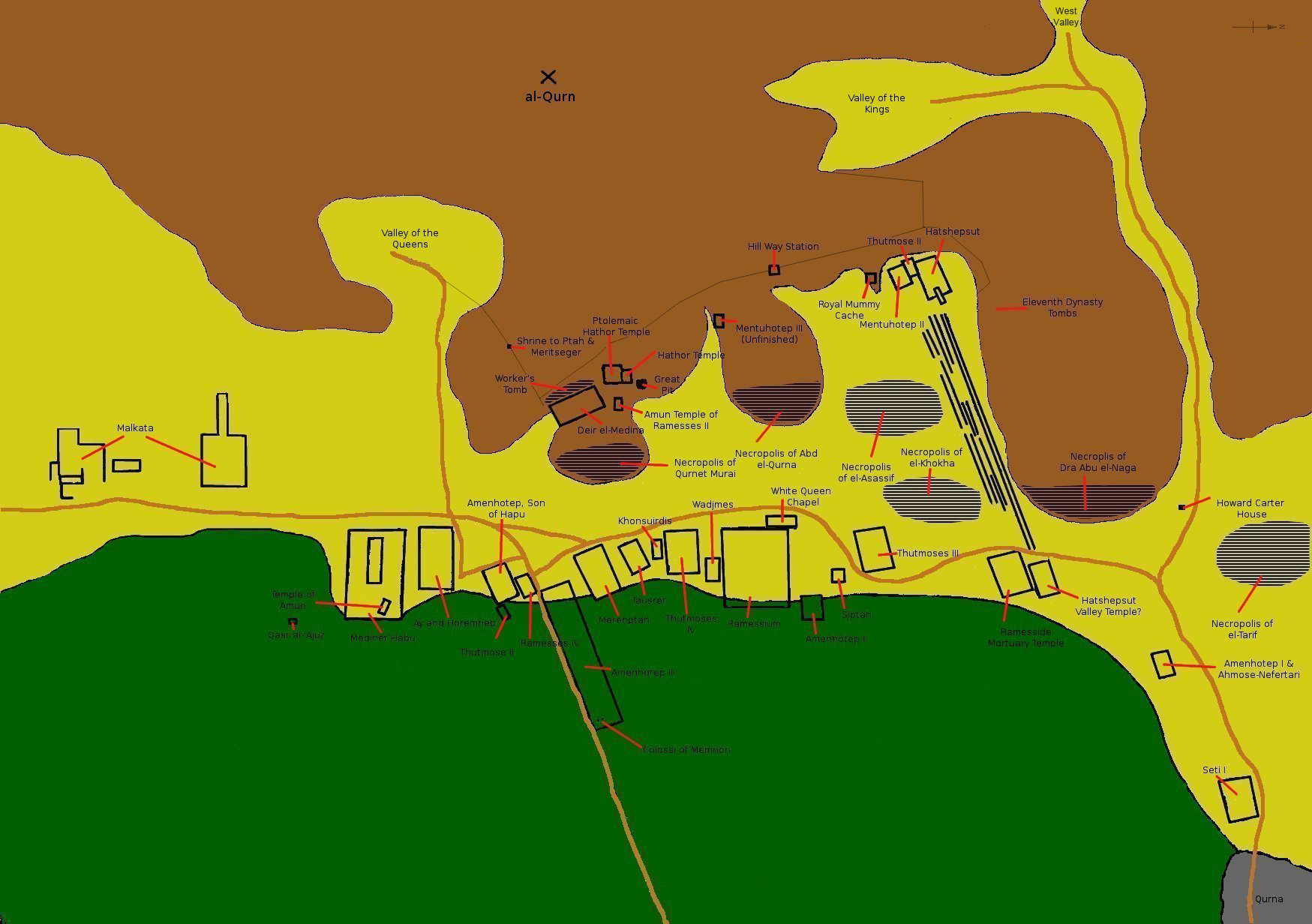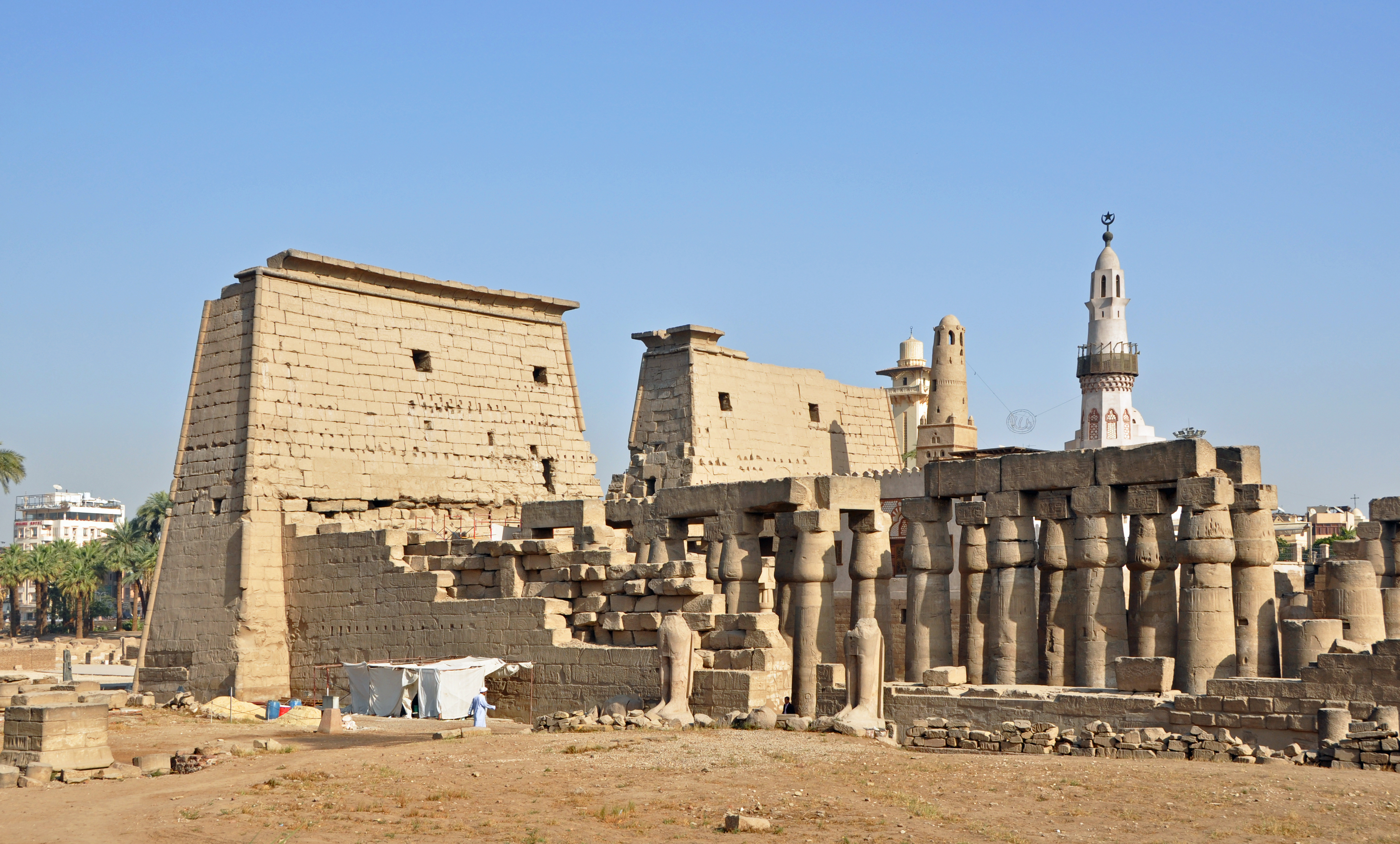|
TT44
The Theban Tomb TT44 is located in Sheikh Abd el-Qurna. It forms part of the Theban Necropolis, on the west bank of the Nile opposite Luxor. The tomb is the burial place of the ancient Egyptian Amenemhab, whose title was ''wab-priest in front of Amun''. He dates to the Ramesside Period. See also * List of Theban tombs The Theban Necropolis is located on the west bank of the Nile, opposite Luxor, in Egypt. As well as the more famous royal tombs located in the Valley of the Kings and the Valley of the Queens, there are numerous other tombs, more commonly refer ... References Theban tombs Nineteenth Dynasty of Egypt {{AncientEgypt-stub ... [...More Info...] [...Related Items...] OR: [Wikipedia] [Google] [Baidu] |
Sheikh Abd El-Qurna
The necropolis of Sheikh Abd el-Qurna ( ar, شيخ عبدالقرنة) is located on the West Bank at Thebes in Upper Egypt. It is part of the archaeological area of Deir el-Bahari, and named after the domed tomb of the local saint. This is the most frequently visited cemetery on the Theban west bank, with the largest concentration of private tombs. Tombs * TT21 User, Scribe, Steward of king Thutmose I * TT22 Wah, later usurped by Meryamun * TT23 – Tjay * TT30 Khonsmose, Amun treasury official, Ramesside * TT31 – Khonsu * TT38 Djeserkaraseneb, Scribe, Counter of grain in the granary of the divine offerings of Amun * TT41 Amenemopet called Ipy, Amun temple high steward * TT42 Amenmose, Captain of troops, Eyes of the King in the Two Lands of the Retenu * TT43 Neferrenpet, Overseer of the kitchen (stores?) of Pharaoh * TT44 Amenemhab, wab-priest in front of Amun * TT45 Djehuty, Steward of high priest of Amun Mery * TT46 Ramose, Steward of the Mansion of the Ate ... [...More Info...] [...Related Items...] OR: [Wikipedia] [Google] [Baidu] |
List Of Theban Tombs
The Theban Necropolis is located on the west bank of the Nile, opposite Luxor, in Egypt. As well as the more famous royal tombs located in the Valley of the Kings and the Valley of the Queens, there are numerous other tombs, more commonly referred to as Tombs of the Nobles (Luxor), the burial places of some of the powerful courtiers and persons of the ancient city. There are at least 415 cataloged tombs, designated TT for Theban Tomb. There are other tombs whose position has been lost, or for some other reason do not conform to this classification. See for instance the List of MMA Tombs. Theban tombs tended to have clay funerary cones placed over the entrance of the tomb chapels. During the New Kingdom they were inscribed with the title and name of the tomb owner, sometimes with short prayers. Of the 400 recorded sets of cones, only about 80 come from cataloged tombs. The numbering system was first published Arthur Weigall's 1908 ''Report on the Tombs of Shêkh Abd’ el Gûr ... [...More Info...] [...Related Items...] OR: [Wikipedia] [Google] [Baidu] |
Theban Tombs
The Theban Necropolis is located on the west bank of the Nile, opposite Luxor, in Egypt. As well as the more famous royal tombs located in the Valley of the Kings and the Valley of the Queens, there are numerous other tombs, more commonly referred to as Tombs of the Nobles (Luxor), the burial places of some of the powerful courtiers and persons of the ancient city. There are at least 415 cataloged tombs, designated TT for Theban Tomb. There are other tombs whose position has been lost, or for some other reason do not conform to this classification. See for instance the List of MMA Tombs. Theban tombs tended to have clay funerary cones placed over the entrance of the tomb chapels. During the New Kingdom they were inscribed with the title and name of the tomb owner, sometimes with short prayers. Of the 400 recorded sets of cones, only about 80 come from cataloged tombs. The numbering system was first published Arthur Weigall's 1908 ''Report on the Tombs of Shêkh Abd’ el Gûrneh ... [...More Info...] [...Related Items...] OR: [Wikipedia] [Google] [Baidu] |
Thebes, Egypt
, image = Decorated pillars of the temple at Karnac, Thebes, Egypt. Co Wellcome V0049316.jpg , alt = , caption = Pillars of the Great Hypostyle Hall, in '' The Holy Land, Syria, Idumea, Arabia, Egypt, and Nubia'' , map_type = Egypt , map_alt = , map_size = , relief = yes , coordinates = , location = Luxor, Luxor Governorate, Egypt , region = Upper Egypt , type = Settlement , part_of = , length = , width = , area = , height = , builder = , material = , built = , abandoned = , epochs = , cultures = , dependency_of = , occupants = , event = , excavations = , archaeologists = , condition = , ownership = , management = , public_access = , website = , notes = , designation1 = WHS , designation1_offname = Ancient ... [...More Info...] [...Related Items...] OR: [Wikipedia] [Google] [Baidu] |
Theban Necropolis
The Theban Necropolis is a necropolis on the west bank of the Nile, opposite Thebes ( Luxor) in Upper Egypt. It was used for ritual burials for much of the Pharaonic period, especially during the New Kingdom. Mortuary temples * Deir el-Bahri ** Mortuary temple of Hatshepsut ** Mortuary temple of Mentuhotep II ** Mortuary temple of Thutmose III * Medinet Habu ** Mortuary temple and palace of Ramesses III ** Mortuary Temple of Ay & Horemheb * Mortuary Temple of Amenhotep III ** Colossi of Memnon * Mortuary Temple of Merneptah * Mortuary Temple of Ramesses IV * Mortuary Temple of Thutmose IV * Mortuary Temple of Thutmose III * Mortuary Temple of Twosret * Temple of Nebwenenef * Qurna ** Mortuary Temple of Seti I * Mortuary Temple of Amenhotep II * Ramesseum (Mortuary Temple of Ramesses II) Royal Necropolis * Valley of the Kings (Modern: "''Wadi el-Muluk''") * Valley of the Queens (Modern: "''Biban el-Harim''") * Royal Cache * Bab el-Gasus Necropolis * Deir el-Med ... [...More Info...] [...Related Items...] OR: [Wikipedia] [Google] [Baidu] |
Nile
The Nile, , Bohairic , lg, Kiira , Nobiin language, Nobiin: Áman Dawū is a major north-flowing river in northeastern Africa. It flows into the Mediterranean Sea. The Nile is the longest river in Africa and has historically been considered the List of rivers by length, longest river in the world, though this has been contested by research suggesting that the Amazon River is slightly longer.Amazon Longer Than Nile River, Scientists Say Of the world's major rivers, the Nile is one of the smallest, as measured by annual flow in cubic metres of water. About long, its drainage basin covers eleven countries: the Democratic Republic of the Congo, Tanzania, Burundi, Rwanda, Uganda, Kenya, Ethiopia, Erit ... [...More Info...] [...Related Items...] OR: [Wikipedia] [Google] [Baidu] |
Luxor
Luxor ( ar, الأقصر, al-ʾuqṣur, lit=the palaces) is a modern city in Upper (southern) Egypt which includes the site of the Ancient Egyptian city of ''Thebes''. Luxor has frequently been characterized as the "world's greatest open-air museum", as the ruins of the Egyptian temple complexes at Karnak and Luxor stand within the modern city. Immediately opposite, across the River Nile, lie the monuments, temples and tombs of the west bank Theban Necropolis, which includes the Valley of the Kings and Valley of the Queens. Thousands of tourists from all around the world arrive annually to visit Luxor's monuments, contributing greatly to the economy of the modern city. The population of Luxor is 422,407 (2021), with an area of approximately . It is the capital of Luxor Governorate. It is among the oldest inhabited cities in the world. Etymology The name ''Luxor'' ( ar, الأقصر, al-ʾuqṣur, lit=the palace, pronounced , , Upper Egyptian: ) derives from the Ara ... [...More Info...] [...Related Items...] OR: [Wikipedia] [Google] [Baidu] |
Twentieth Dynasty Of Egypt
The Twentieth Dynasty of Egypt (notated Dynasty XX, alternatively 20th Dynasty or Dynasty 20) is the third and last dynasty of the Ancient Egyptian New Kingdom period, lasting from 1189 BC to 1077 BC. The 19th and 20th Dynasties furthermore together constitute an era known as the ''Ramesside period''. This dynasty is generally considered to be the start of the decline of Ancient Egypt. History Background Upon the death of the last pharaoh of the 19th Dynasty, Queen Twosret, Egypt descended into a period of civil war, as attested by the Elephantine stela built by Setnakhte. The circumstances of Twosret's demise are uncertain, as she may have died peacefully during her reign or been overthrown by Setnakhte, who was likely already middle aged at the time. 20th Dynasty A consistent theme of this dynasty was the loss of pharaonic power to the High Priests of Amun. Horemheb, a pharaoh of the 18th Dynasty, had restored the traditional Ancient Egyptian religion and the priesthood ... [...More Info...] [...Related Items...] OR: [Wikipedia] [Google] [Baidu] |
.jpg)




